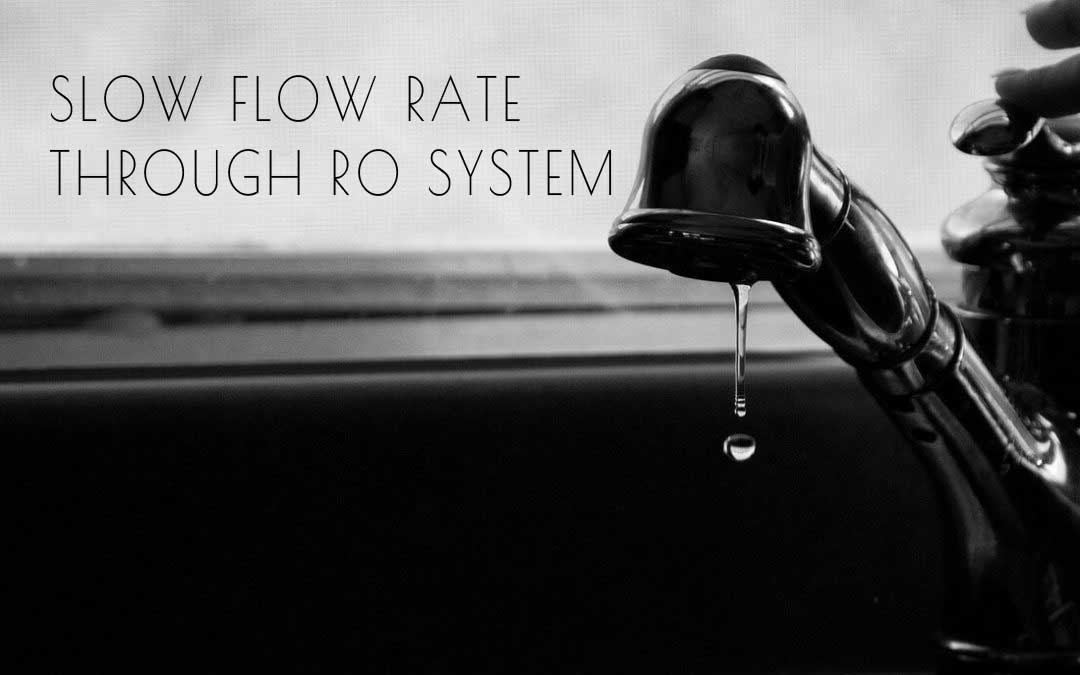News
Why the slow flow rate or no water at all through Reverse Osmosis (RO) System?
Why the slow flow rate or no water at all through Reverse Osmosis (RO) System?
The water purifier can effectively filter out rust, gravel, colloids in the water, and absorb the residual chlorine in the water, smell, color, pesticides and other chemical agents, and can effectively remove bacteria, pathogens, toxins, heavy metals and other impurities in the water.
The application of water purification technology in the field of drinking water making the phenomenon of "water and soil unacceptable" will soon become history, effectively solving the local diseases caused by excessive harmful substances in groundwater in many places.
RO reverse osmosis membrane is the key to the water purifier can drink directly, but often the water is too slow to cause trouble to many people, what is the reason for the slow water output? The following 5 reasons can easily solve your doubts!

1. The RO Membrane is clogged
Factors affecting membrane clogging:
• The RO membrane has been used for a long time, and some have been used for two, three, or more years. According to the instructions, the life of the membrane is one and a half to two years.
• The life of the RO membrane must consider water consumption and raw water quality factors. The water consumption and raw water quality are generally proportional to the life of the membrane.
• The pre-filter core will not be replaced after a long time, causing the concentration of water in the machine to accumulate, which is far worse than the water quality before entering the machine.
• The quality of raw water is poor, and the proportion of concentrated water is small, causing the clogging of the concentrated water solenoid valve or flushing combination valve, and then the machine does not discharge concentrated water or discharges very little concentrated water.
• The quality of the membrane itself is poor.
HID Membrane is a good choice for you! After 11 years of market verification, HID Membrane is a very cost-effective RO membrane. It has good water output and is not easy to cause clogging.
2. The filter element is clogged
To make an analogy, the filter element of a water purifier is like the “kidney” of our body. The water quality of the water purifier not only depends on the quality of the filter element but also depends on whether the service life of the filter element is replaced in time. To replace it, it will cause water blockage, the water flow is getting smaller and smaller, and the entire water purification system will be polluted by long-term use, so users should develop a good habit of regularly replacing the filter element. Generally, manufacturers of standard water purifiers will not have arbitrary charges, and the cost of core replacement is not high.
3. The post-carbon filter is blocked
This situation generally occurs after replacing the new post-carbon filter. Because there is too much toner, it does not break away. Therefore, the general granular activated carbon filter can not be filled too much (not to cut corners), to reserve filling space, on the one hand, to ensure water flow, on the one hand, activated carbon itself also has an expansion coefficient.
The service life of the RO water purifier filter core can refer to the article: How often replace reverse osmosis membrane?
4. Low temperature
The water production rate of the RO membrane has a great relationship with the temperature, the hottest not exceeding 40 degrees, the lowest not less than 5 degrees. Generally, the best temperature is 25 degrees. Based on 25 degrees, the water production will generally decrease by 3% for every degree lower. Therefore, the water production speed in winter is generally reduced by half or more than that in summer. Rural users especially need to pay attention to cold and frost protection. Sometimes the filter bottle and membrane shell will be damaged in winter, and the outlet of the concentrated water pipeline should not be placed outdoors in winter.
5. Small pump boost
The pump pressure is small, and it usually occurs in a reverse osmosis water purifier with a service life of more than two years or a pure water machine that has been working for a long time. The water making principle of the pure water machine is driven by the pump pressure to the appropriate pressure that the water can pass through the reverse osmosis membrane. The domestic water purifier is generally about 6-7 kg, and the reverse osmosis commercial machine is generally about 4 to 6 kg. Increased water consumption by users and pollution of water quality may lead to short pump life.

